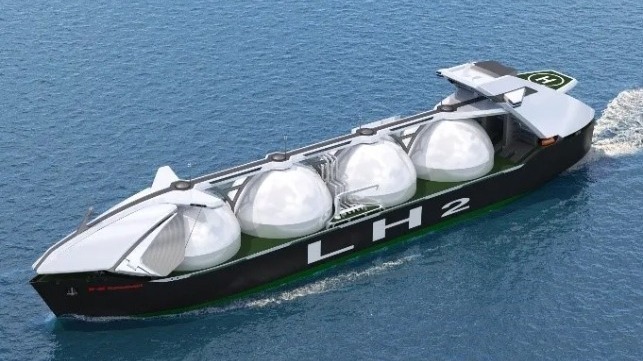Japan Launches $3 Billion R&D Project for Hydrogen Transportation

The Japanese government will prove more than $3 billion in funding for a long-term research project designed to build a large-scale hydrogen supply chain and demonstration of hydrogen power generation technology. The wide-reaching effort will focus on the technologies required for the transportation of hydrogen as well as the processes and materials required for the handling of large amounts of hydrogen. The R&D program is part of an overall $18 billion commitment from the Japanese government to fund research to support achieving their goal of becoming carbon neutral by 2050.
Japan’s plan for decarbonization of its industries, ranging from shipping to manufacturing and utilities, incorporates a strong focus on hydrogen. The government has called for a 50 percent increase in the use of hydrogen to three million tons per year by 2030. To reach its carbon-neutral goal in 2050, they project the country will require 20 million tons of hydrogen a year.
The National Research and Development Corporation’s New Energy and Industrial Technology Development Organization (NEDO) is calling for proposals for a series of projects designed to support the development of the hydrogen supply chain and the use of hydrogen in power generation. Japan’s Industrial Ministry outlined 18 proposed R&D projects that the government plans to support, with NEDO now accepting applications until the beginning of July for the several R&D projects.
The first of the projects, which is expected to run for up to 10 years, is for the development and demonstration of large-scale and high-efficiency technologies for the transportation of hydrogen. The focus will be on liquefied hydrogen and a hydrogen catalyst methylcyclohexane, and the technologies required to transport the hydrogen from its production sites to Japan. To achieve a commercial scale, they estimate that 200 thousand or more tons per year will need to be transported.
For the methylcyclohexane catalyst, the focus is also on developing component equipment that further improves the durability and performance of the catalyst in the dehydrogenation process. Japan proposes to used existing equipment, such as refineries, to optimize it through the current crude oil refining process.
Another element of the R&D focuses on the materials needed to transport and store liquefied hydrogen. The project calls for the creation of a material database evaluating and analyzing materials in the extremely low-temperature range and conditions such as fatigue, tension, crack growth, and fracture toughness for metal base materials and welded members. The goal is to contribute to the standardization of materials used with liquefied hydrogen storage tanks and the review of regulations.
To further reduce the cost of transportation of liquefied hydrogen and the cost and efficiency of the processes for liquefaction and dehydrogenation, the R&D will also seek new technologies that address the loss of energy during transportation and from these processes.
The second R&D program focuses on hydrogen power generation technology. The focus will be on achieving power generation efficiency equivalent to that of natural gas-fired power generation while taking measures against issues peculiar to hydrogen power generation, including flashback, combustion vibration, and increase in NOx value. The project will seek to display its results at the Japan International Exposition scheduled to be held in 2025 and ultimately develop and demonstrate the power generation technology.
